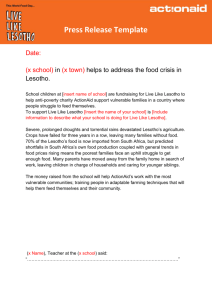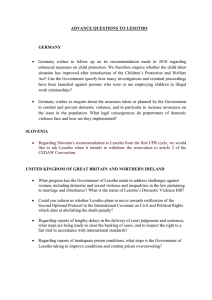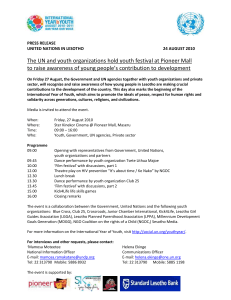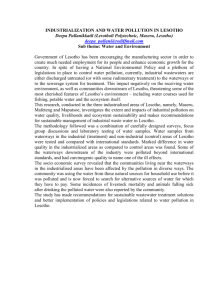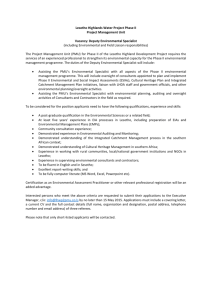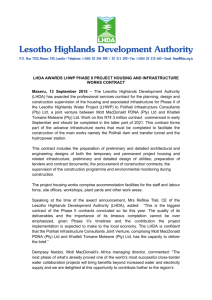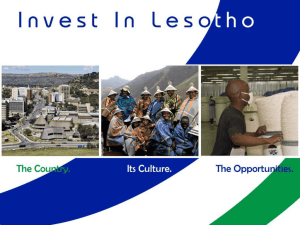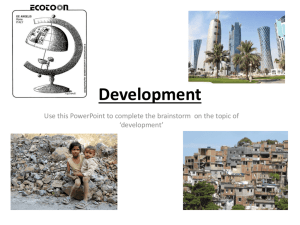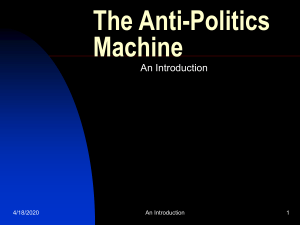Word - Unicef
advertisement
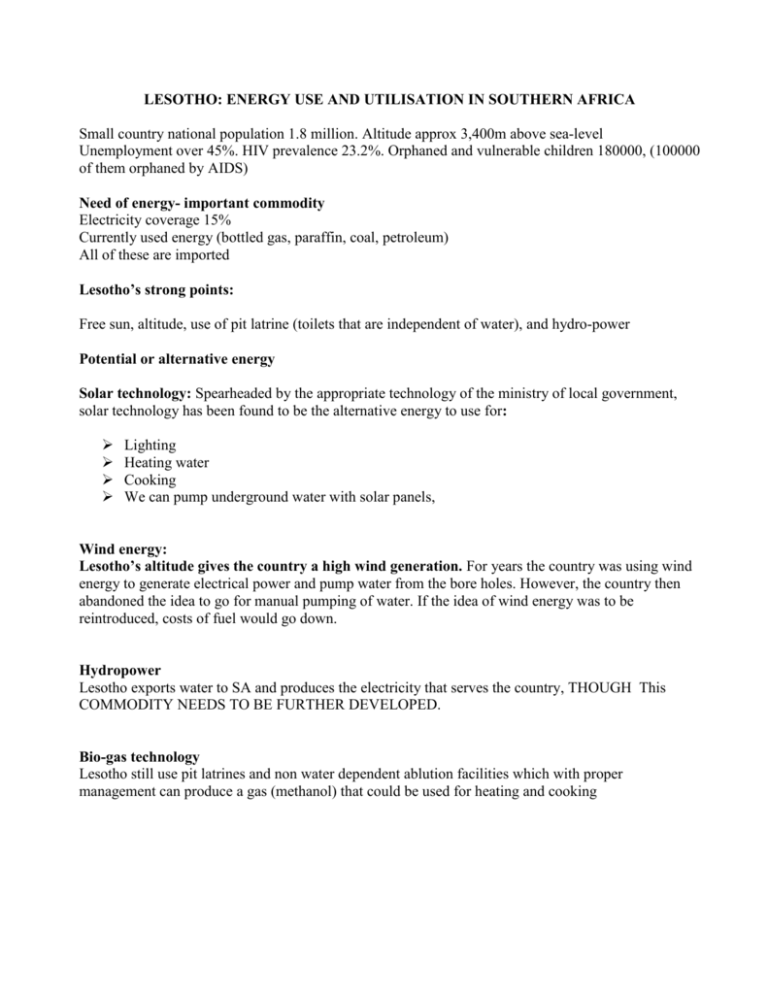
LESOTHO: ENERGY USE AND UTILISATION IN SOUTHERN AFRICA Small country national population 1.8 million. Altitude approx 3,400m above sea-level Unemployment over 45%. HIV prevalence 23.2%. Orphaned and vulnerable children 180000, (100000 of them orphaned by AIDS) Need of energy- important commodity Electricity coverage 15% Currently used energy (bottled gas, paraffin, coal, petroleum) All of these are imported Lesotho’s strong points: Free sun, altitude, use of pit latrine (toilets that are independent of water), and hydro-power Potential or alternative energy Solar technology: Spearheaded by the appropriate technology of the ministry of local government, solar technology has been found to be the alternative energy to use for: Lighting Heating water Cooking We can pump underground water with solar panels, Wind energy: Lesotho’s altitude gives the country a high wind generation. For years the country was using wind energy to generate electrical power and pump water from the bore holes. However, the country then abandoned the idea to go for manual pumping of water. If the idea of wind energy was to be reintroduced, costs of fuel would go down. Hydropower Lesotho exports water to SA and produces the electricity that serves the country, THOUGH This COMMODITY NEEDS TO BE FURTHER DEVELOPED. Bio-gas technology Lesotho still use pit latrines and non water dependent ablution facilities which with proper management can produce a gas (methanol) that could be used for heating and cooking Toilet/ waste Vegetable garden manure Bio gas generator House hold consumption Although not very reliable in industrialised countries at community level it is effective highly efficient because In /Lesotho, the biggest challenge is giving a poor girl, boy, man, woman living at the peak of the highest point in Lesotho energy at a lowest price if not, no cost at all. The country has a chance though of developing electricity generated from the Muela Hydropower station. Energy and Youth Lesotho is faced with a high number of youth that is unemployed but still depends on energy. Recommendations: The recommendation is that if the G8 countries could empower (through training) the youth in creating and managing alternative energy for household consumption, the poor would be saved a thousand of Rand. Help develop the existing hydropower station (Muela ) to produce more electricity to cover to whole country. Since the country is planning to build more dams for water harvesting, each dam should be developed to generate electricity. In the meantime, since every family, still needs energy, assisting the country in developing biogas generators for their villages and solar panels big enough to cover a village of 100 households. The Appropriate Technology of the ministry of Local government has already started in developing this, but they need support for strengthening this. Support development and research on bio-energy especially in sunflower oil/ as an alternative fuel. Solar technology materials are expensive, we need the materials to be freely accessible and available
